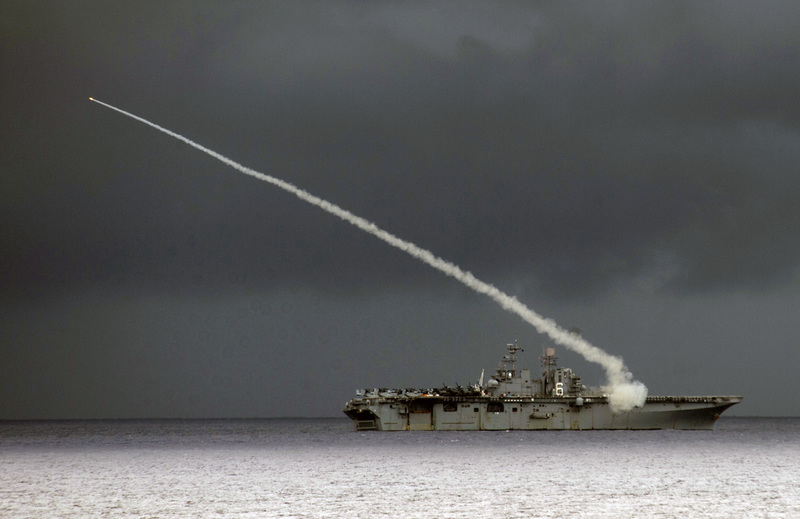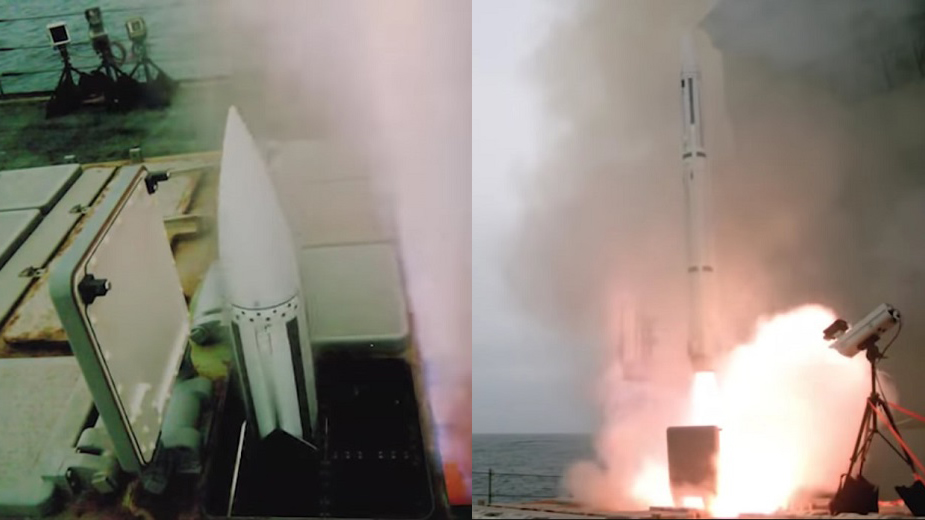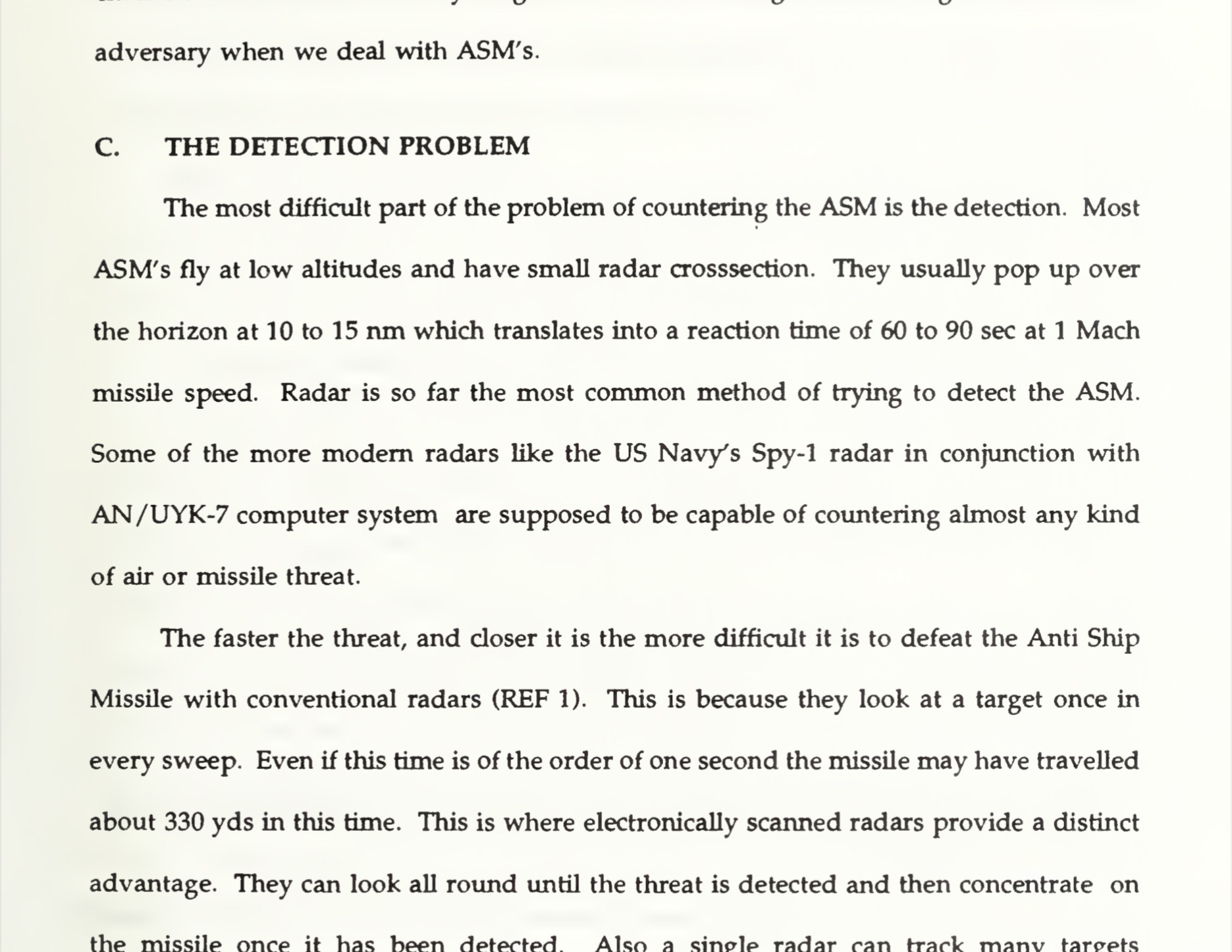I remembered it wrong, i recalled at some point a person has told they were "also" working on active RF seekers, that was probably 7-8 years agoWait you all confused me, again i'm puzzled. What kind of radar guided missile could be beside Active radar guidance? İ don't think they are making semi-active radar guided missile, aren't they?
Latest Thread
You are using an out of date browser. It may not display this or other websites correctly.
You should upgrade or use an alternative browser.
You should upgrade or use an alternative browser.
TR Air Defence Programs
- Thread starter Ghost soldier
- Start date
hisar rf is a real alternative for ESSM for our navy
Khagan1923
Contributor
Could we quadpack Hisar-O+ RF in MDAS or would the diameter be too big?
It seems to have a similar one to ESSM but I don't know if that includes the wings are not.

It seems to have a similar one to ESSM but I don't know if that includes the wings are not.
My wild guesses (explanation: bullshit stuff I made with Microsoft Paint to guess graphically without any kind of calculation or aerodynamics, just for thought exercise)
Hisar A ~10 km 15000ft (~4500m)- able to reach 20000ft (~6000m) for targets overhead (the missile will be slow, target already delivering bombs or getting away, not suitable to use for most scenarios)
Hisar A+ 15km (Edit: probably 17km range, with official 26000ft (8km) altitude, the official range did not change from A version but I think it should improve a bit more, due to altitude increase or A version performing worse than predicted 15 km range)
Hisar O+ 25km 32000ft (~10000m) -able to reach 45000ft (~14000km) for targets overhead
------------------------------
Both can shoot further but will not be effective as much towards higher flying targets than this optimum scenario.
Both can shoot higher if firing overpassing targets.
Question-answer style to myself to better understand things:
Why the ranges are not long like foreign conterparts?
I guess our missiles are heavier. Maybe with newer blocks, the range and altitude will get progressively better. We simply do not have 50+ years of missile development experience like others, maybe some stuff are hidden in plain sight, like tricks to save weight.
Why the estimates are super conservative?
Based on official figures, I tried to fit ranges to altitudes. I think official figures are realistic for real targets and scenarios and don't say anything about kinematic envelope of the missile. It does not matter anyway, I'm happy they stick to real and useful numbers instead of exaggarating and boasting.
Hisar-O+ seems like little improvement over Hisar-A, what is the purpose of developing O+?
See the drawing, even if the numbers are slightly higher the covered volume is much bigger, red is Hisar-O+, blue is Hisar-A (not +).

Hisar A ~10 km 15000ft (~4500m)- able to reach 20000ft (~6000m) for targets overhead (the missile will be slow, target already delivering bombs or getting away, not suitable to use for most scenarios)
Hisar A+ 15km (Edit: probably 17km range, with official 26000ft (8km) altitude, the official range did not change from A version but I think it should improve a bit more, due to altitude increase or A version performing worse than predicted 15 km range)
Hisar O+ 25km 32000ft (~10000m) -able to reach 45000ft (~14000km) for targets overhead
------------------------------
Both can shoot further but will not be effective as much towards higher flying targets than this optimum scenario.
Both can shoot higher if firing overpassing targets.
Question-answer style to myself to better understand things:
Why the ranges are not long like foreign conterparts?
I guess our missiles are heavier. Maybe with newer blocks, the range and altitude will get progressively better. We simply do not have 50+ years of missile development experience like others, maybe some stuff are hidden in plain sight, like tricks to save weight.
Why the estimates are super conservative?
Based on official figures, I tried to fit ranges to altitudes. I think official figures are realistic for real targets and scenarios and don't say anything about kinematic envelope of the missile. It does not matter anyway, I'm happy they stick to real and useful numbers instead of exaggarating and boasting.
Hisar-O+ seems like little improvement over Hisar-A, what is the purpose of developing O+?
See the drawing, even if the numbers are slightly higher the covered volume is much bigger, red is Hisar-O+, blue is Hisar-A (not +).
Last edited:
G40 is the real alternative (or even improved) of ESSM being developed by SAGE.hisar rf is a real alternative for ESSM for our navy
And it will be quad-packed.
Could we quadpack Hisar-O+ RF in MDAS or would the diameter be too big?
It seems to have a similar one to ESSM but I don't know if that includes the wings are not.

Combat-Master
Baklava Consumer
Probably there will be a missile with active RF guidance too. (if the displayed one is not active)
It was an official who has mentioned about developing active seekers.
PS: the seeker was already active RF
Aselsan don't F around when it comes to RF
I'm waiting for G40 eagerly, unlike other missiles they don't talk much about this one.G40 is the real alternative (or even improved) of ESSM being developed by SAGE.
And it will be quad-packed.
If it's performance is like Hisar and scaled up it might reach 40000 ft and 50 km at max range (if ~40000ft-40km is the aim). But for TF2000 we need more, like G40 with a booster or SM-1/2 clone with Göktüğ sensors. This is so essential to our Navy, probably that's why we don't hear much about it.
If we develop a booster as big as the missile rocket engine, than the missile will reach 70000ft for 75km and 80000 ft for 100km. Once the missile gets high enough at thin air, even 100km+ is progressively easier.
Another useful option would be to load booster-G40 to high altitude drones and coordinate launches with ADVENT/datalink. I think plain G40 might reach to 80-100km easily even if UAV is flying directly above the TF2000 or any other friendly vessel at 40000ft , if trajectory shaping is used to fly higher and strike from above.
Same applies to land based defence, SAM loaded UAV sounds like a stupid thing but it's not. It's hard to beat price and endurance with high altitude launch capability.
Last edited:
G40 is our home made ESSM.
ESSM missile, on paper is an approximately 50km range missile with an operating altitude of maximum 8km. But in reality this missile claimed to have a range of nearly 80km. There is also an ESSM-ER missile with a booster stage, which is claimed to have a range of 130km.
With simple logic; If we are a production and development partner in the ESSM consortium, then it is normal to think that our G40 will have similar parameters as the ESSM. Also if we add a booster stage to our G40 then it will be a 130km range ESSM-ER duplicate. This missile will probably have an operational altitude of approximately 13-15km. It would be a ballistic missile killer too.
quote:
It is difficult to determine how much range and altitude and additional stage would provide the ESSM. From public sources, it appears that the maximum effective range of the ESSM is in excess of 50 km, perhaps as long as 80 km (48 statute miles). With a rule of thumb 40-60% increase for doubling fuel, the resulting range would be around 130 km (78 statute miles). That results in a coverage area that is approximately tripled over the base ESSM Block II. A similar increase in engagement altitude would result in missile capable of engaging shorter ranged ballistic missile threats targeting the launching ships or ships close to the launching ship.
unquote.

 www.realcleardefense.com
www.realcleardefense.com
ESSM missile, on paper is an approximately 50km range missile with an operating altitude of maximum 8km. But in reality this missile claimed to have a range of nearly 80km. There is also an ESSM-ER missile with a booster stage, which is claimed to have a range of 130km.
With simple logic; If we are a production and development partner in the ESSM consortium, then it is normal to think that our G40 will have similar parameters as the ESSM. Also if we add a booster stage to our G40 then it will be a 130km range ESSM-ER duplicate. This missile will probably have an operational altitude of approximately 13-15km. It would be a ballistic missile killer too.
quote:
It is difficult to determine how much range and altitude and additional stage would provide the ESSM. From public sources, it appears that the maximum effective range of the ESSM is in excess of 50 km, perhaps as long as 80 km (48 statute miles). With a rule of thumb 40-60% increase for doubling fuel, the resulting range would be around 130 km (78 statute miles). That results in a coverage area that is approximately tripled over the base ESSM Block II. A similar increase in engagement altitude would result in missile capable of engaging shorter ranged ballistic missile threats targeting the launching ships or ships close to the launching ship.
unquote.

A Call for the ESSM-ER
The Evolved Sea Sparrow (ESSM) is a good, low-cost missile used for local air defense by the U.S. Navy as well as several allies. The short range of the missile limits its use as anything other
Last edited:
Some more official figures:
NASAMS range for ground launched AMRAAM is 33km range, 15 km (50000ft) altitude
AMRAAM-ER is supposed to have ESSM body, and it will increase this envelope by %50 in range and %70 in altitude.
It makes 50 km range and 25 km - 85000ft altitude.
Sources: For NASAMS range https://www.globalsecurity.org/military/world/europe/nasams.htm
For AMRAAM-ER range and altitude increase: https://www.kongsberg.com/kda/produ.../nasams-air-defence-system/rayhteon-missiles/
So AMRAAM is 50000ft/33 km
AMRAAM-ER (ESSM body) could be 85000ft/50 km
Hisar O+ 30000ft/25 km
SM-2MR 100000ft/160km
The official figure for ESSM looks like it's very conservative, especially for altitude. Maybe it has to do with trajectory and algorithms, if it's trying to fly directly to the target from a low altitude...
NASAMS range for ground launched AMRAAM is 33km range, 15 km (50000ft) altitude
AMRAAM-ER is supposed to have ESSM body, and it will increase this envelope by %50 in range and %70 in altitude.
It makes 50 km range and 25 km - 85000ft altitude.
Sources: For NASAMS range https://www.globalsecurity.org/military/world/europe/nasams.htm
For AMRAAM-ER range and altitude increase: https://www.kongsberg.com/kda/produ.../nasams-air-defence-system/rayhteon-missiles/
So AMRAAM is 50000ft/33 km
AMRAAM-ER (ESSM body) could be 85000ft/50 km
Hisar O+ 30000ft/25 km
SM-2MR 100000ft/160km
The official figure for ESSM looks like it's very conservative, especially for altitude. Maybe it has to do with trajectory and algorithms, if it's trying to fly directly to the target from a low altitude...
T
Turko
Guest
There was ESSM land vehicle launched prototype for poland and it could intercept at 13km altitude in 25km range.
We won't have G40 extended range version since SIPER ( Standard Missile equivalent) is supposed to be navalized.
We won't have G40 extended range version since SIPER ( Standard Missile equivalent) is supposed to be navalized.
I hope we do G-40-ERThere was ESSM land vehicle launched prototype for poland and it could intercept at 13km altitude in 25km range.
We won't have G40 extended range version since SIPER ( Standard Missile equivalent) is supposed to be navalized.
- quad-pack
- cheaper than SM
- ready before Siper
- known missile type
- Its booster can fit to tactical length VLS so I class and similar can have area defence capability.
I’m also a fan of SM though...
hisar G for stop gap until G40 is readyG40 is the real alternative (or even improved) of ESSM being developed by SAGE.
And it will be quad-packed.
G40 will be ready in a short time. Even faster than adopting Hisar O+ RF to a naval platform.its for stop gap until G40
Note: Turkish Navy wouldn't use IIR guidance except the Sungur.
T
Turko
Guest
I'm okay with G40 but i don't think you could quad pack the ER version.I hope we do G-40-ER
- quad-pack
- cheaper than SM
- ready before Siper
- known missile type
- Its booster can fit to tactical length VLS so I class and similar can have area defence capability.
I’m also a fan of SM though...
Comparing G40 ER ( which doesn't exist
Anyway at hand we have Hisar O + which we should praise for now .
Show us more pictures of Hisar O+.
Apparently you can in MK41 VLS system. So if they can, so should we with our MDAS system.I'm okay with G40 but i don't think you could quad pack the ER version.
Comparing G40 ER ( which doesn't exist) with SIPER is wrong. Because if G40 is tangible , it means SIPER will be ready very soon.
Anyway at hand we have Hisar O + which we should praise for now .
Show us more pictures of Hisar O+.
quote:
The resulting ESSM-ER would be a perfect weapon for frigates, both those of our allies and the forthcoming FFG(X) class. Even with the limited number VLS cells on these platforms, the ESSM-ER can be mixed with ESSM Block II missiles to provide credible self-defense against swarm attacks by providing a large number of missiles with the range to provide multiple interception opportunities of incoming threats.
unquote.

A Call for the ESSM-ER
The Evolved Sea Sparrow (ESSM) is a good, low-cost missile used for local air defense by the U.S. Navy as well as several allies. The short range of the missile limits its use as anything other
Is booster diameter the problem for quad packing?I'm okay with G40 but i don't think you could quad pack the ER version.
Comparing G40 ER ( which doesn't exist) with SIPER is wrong. Because if G40 is tangible , it means SIPER will be ready very soon.
Anyway at hand we have Hisar O + which we should praise for now .
Show us more pictures of Hisar O+.
It can be the same diameter, using the same mk 134 motor. Since it’s a domestic missile we can tailor it like Americans did with Aegis version of SM2ER if I recall correctly, their problem was length and they made a shorter booster.
for to stop incoming missile 35-40km is the limit for sensors range,so extension of range only can be achived by heli or uav assist,so reaction time almost same for all ships sensors for subsonic incoming missilesApparently you can in MK41 VLS system. So if they can, so should we with our MDAS system.
quote:
The resulting ESSM-ER would be a perfect weapon for frigates, both those of our allies and the forthcoming FFG(X) class. Even with the limited number VLS cells on these platforms, the ESSM-ER can be mixed with ESSM Block II missiles to provide credible self-defense against swarm attacks by providing a large number of missiles with the range to provide multiple interception opportunities of incoming threats.
unquote.

A Call for the ESSM-ER
The Evolved Sea Sparrow (ESSM) is a good, low-cost missile used for local air defense by the U.S. Navy as well as several allies. The short range of the missile limits its use as anything otherwww.realcleardefense.com
Sorry but I can’t quite understand what you are trying to say! If you are saying that the ESSM’s range is limited to 35-40 km , because the ship’s or its own sensor’s range is also limited to 35-40 km, then can you explain why they give a range of 50km for this missile?for to stop incoming missile 35-40km is the limit for sensors range,so extension of range only can be achived by heli or uav assist,so reaction time almost same for all ships sensors for subsonic incoming missiles
This was discussed here before; The Ship’s radar senses the bogey and guides the missile to it with ESSM block 1. So if the missile can go 80 km, then it will engage the target at 80 km. With block 2 after launch, Ship’s radar releases the missile and missile directs itself to the target.
ESSM missiles are good for both incoming subsonic and supersonic missiles.

Low-rate initial production begins for Raytheon ESSM Block 2 - Naval News
The U.S. Navy awarded Raytheon Company a $190 million low-rate initial production contract for ESSM Block 2 missiles featuring a new guidance system with a dual mode active and semi-active radar.





